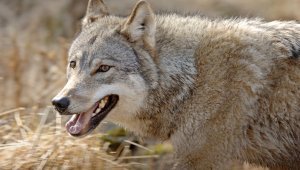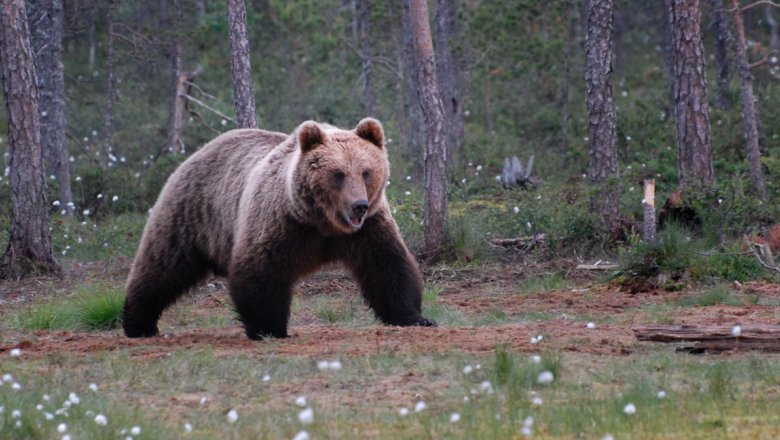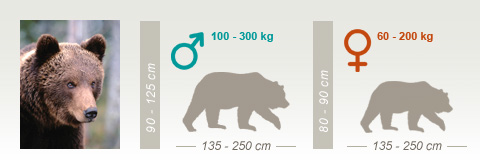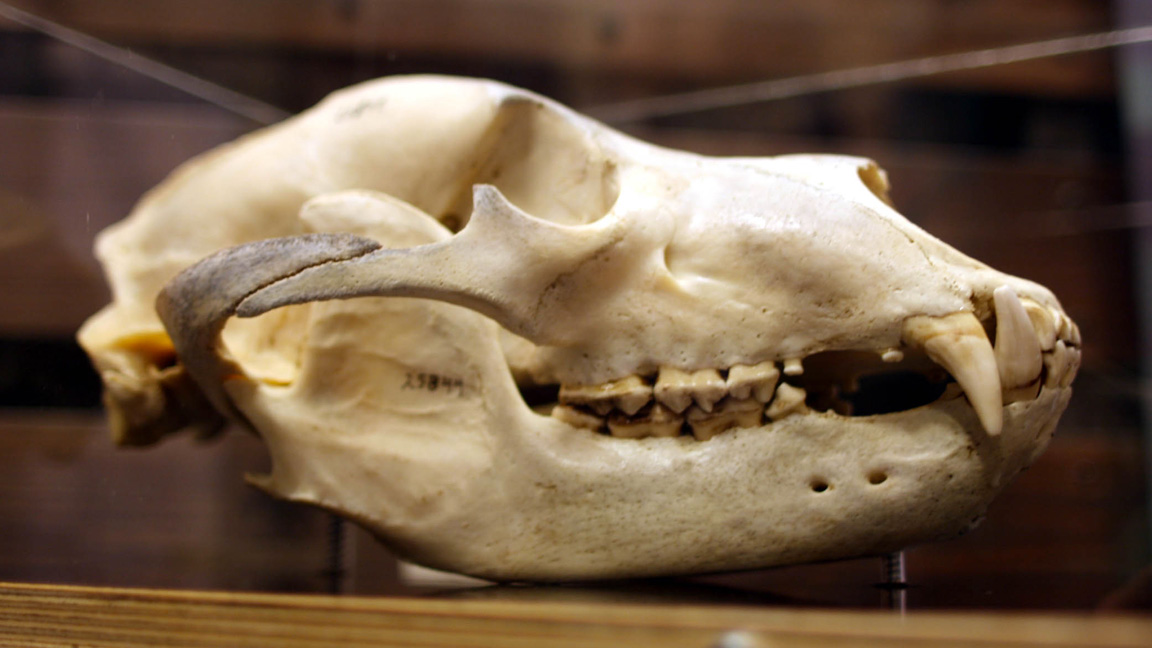Description of the bear
The brown bear's fur is very thick, which gives its body a round impression. The bear's ears are small and round yet clearly distinguishable. The colour of the bear varies from black-brown to yellow-brown.
Bear tracks
The bear has the largest tracks of all of Finland's native species. The paw print of a bear's hindpaw slightly resembles the footprint of a human. In summer the bear might leave behind a destroyed anthill or tree stump. The bear's winter den is very difficult to find.
Bear behaviour and reproduction
When snow is on the ground, the bear is in hibernation. Bears retreat into their winter dens between September and March and wake up again in March–May. In the summer the males move around a lot more than most people think.



